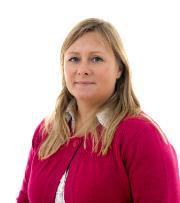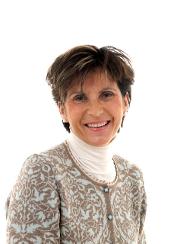Barnespråk

Merete Brendeford Anderssen
Professor / Leder for C-LaBL Learning Domain
Unit: Department of Language and Culture
In short, I’m interested in first, second, third and multilingual acquisition, syntactic variation in adult and child language, language attrition/heritage languages, and especially how the languages of multilinguals affect one another.
My background is mainly within syntactic theory and monolingual first language acquisition. For my PhD, I investigated the structure of the Norwegian noun phrase, as well as how it is acquired. I collected a longitudinal corpus with three monolingual children between the ages of 1;9-3. In the study I accounted for the semantics, syntactic structure and the prosodic characteristics of early uses of articles and determiners. My main focus was on the phenomenon known as double definiteness. Following on from this, I worked a lot on word order variation, specifically on what determines the choice of word order when such variation is permitted, and how this is acquired. This included work on subject and object shift, double objects, and possessives, which in Norwegian may be pre- or postnominal. Many of these studies were based on elicited production data.
In recent years, I have expanded my work on the acquisition of noun phrases and word order variation to bilingual acquisition and heritage languages, in addition to continuing my work on monolingual children and adults. A lot of my work on multilinguals has focused on how structural similarity may result in crosslinguistic influence, and how it may be a factor not only in language acquisition, but also in heritage languages and language attrition. For example, I have studied subject shift and object shift in Norwegian heritage speakers in the US and L2 learners of Norwegian.
In the future, I want to continue working on multilinguals, including second and third language acquisition and heritage language more generally. So far my studies of heritage languages has been based on the elderly speakers in the Corpus of American Nordic Speakers (CANS) and on various bilingual child language corpora. Thus, so far I have worked with very young and very old heritage speakers. In the future my ambition is to study heritage speakers of varying ages. I am also planning a project on the effect of the word order similarities between English and Norwegian in different populations, including heritage speakers of different ages.
Kristine Bentzen
Professor nordisk språkvitenskap
Unit: Department of Language and Culture
Forskningsinteresser:
Mine forskningsinteresser inkludererer sammenlignende språkvitenskap, syntaks, pragmatikk og informasjonsstruktur, nordiske dialekter, barnespråk, første- og andrespråktilegnelse, flerspråklighet, språkrevitalisering, norsk, norske dialekter, nordiske språk, samiske språk og engelsk.
Jeg har bakgrunn fra teoretisk syntaks, spesielt forholdet mellom syntaks og informasjonsstruktur. I doktorgraden min (2007) undersøkte jeg ordstillingsvariasjon i nordnorske dialekter, i sammenligning med andre skandinaviske språk/dialekter. Avhandlinga mi inkluderer også et kapittel om førstespråkstilegnelse av ordstillingsmønstre underordnede setninger på nordnorsk.
Etter doktorgraden har jeg fortsatt å forske på teoretisk syntaks og informasjonsstruktur, og på språktilegnelse.
Jeg har også kommet tilbake til et tema jeg jobbet med i mastergraden min (2000), nemlig språktilegnelse hos flerspråklige barn, og tverrspråklig påvirkning.
Et annet forskningsfelt som jeg har begynt å jobbe med i senere år omhandler samiske språk, og da spesielt nordsamisk og språktilegnelse hos samiskspråklige barn. Fra 2011-2017 ledet jeg prosjektet DASAGO (Davvisámigiel mánáid giellaovdáneapmi – North Sami child language acquisition), finansiert av Forskningsrådet. I dette prosjektet jobbet vi blant annet med å utvikle en tilpasning av MacArthur-Bates CDI (Communicative Development Inventory) til nordsamisk, samt at vi samlet inn et barnespråkskorpus av nordsamisktalende barn. Vi undersøkte også ulike grammatiske fenomener i samisk (barne)språk med utgangspunkt i dette korpuset. Vi jobber fortsatt med materiale som ble samlet inn i forbindelse med dette prosjektet.
Til sist har jeg nå begynt å sette meg inn i et tema som jeg lenge har vært interessert i, nemlig språkvansker. Jeg holder for tida på med en mastergrad i logopedi, og håper å forske på denne tematikken i fremtida.
For tida jobber jeg med blant annet:
- Object shift/Objektsveksling i norsk og andre skandinaviske språk, både i voksenspråk og i barnespråk
- OV/VO-veksling i nordsamisk, både i voksenspråk og i barnespråk
- Første- og andrespråkstilegnelse av ordstillingsvariasjon og informasjonsstruktur
- Flerspråklig språktilegnelse (norsk/engelsk, norsk/nordsamisk) og tverrspråklig påvirkning
- Tilegnelse av nordsamisk i et språkrevitaliseringsperspektiv
Jeg er involvert i følgende eksterne prosjekter:
- Ekstern ekspertkonsulent i prosjektet The development of Object Shift in North Germanic Child Language, ledet av Filippa Lindahl (Vest Universitet, Sverige)
- SamBa – Growing up in the Arctic. A longitudinal study of early childhood development and health in indigenous and non-indigenous children, ledet av Siv Kvernmo (Institutt for klinisk medisin, UiT)
Bror-Magnus S. Strand
Open vitskap
Unit: Office for Research and Innovation
Marit L Sundelin
Universitetslektor i norsk og stipendiat
Unit: Department of Education
Flerspråklighet, barns språkutvikling, språkstimulering i barnehagen, overgang barnehage-skole, rekontekstualisert språk.

Marit Westergaard
Professor engelsk språkvitenskap
Unit: Department of Language and Culture
First, second/third, and bilingual language acquisition, syntactic variation, heritage languages, language attrition, diachronic change, comparative syntax, word order, nominal structure (grammatical gender, definiteness, possessives), English, Norwegian (especially North Norwegian dialects), Russian, German
Personal website: https://site.uit.no/maritwestergaard/